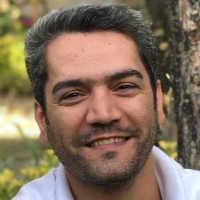A New Stochastic Model for Emergency Location Problem with Minimax Regret Model (Case Study: Mashhad)
The recent increase in the number of natural disasters, earthquake in particular, underlines the need to investigate the problem of emergency location. In this study, a new hybrid approach is presented for emergency location-allocation problem which incorporates GIS, system dynamics, Coburn and Spence model, and stochastic programming. In the proposed approach, first, the candidate places are identified based on a number of indices using GIS. Since the emergency location demand is considered as an uncertain parameter depending on different scenarios of the earthquake, in the next step, a combination of system dynamics and the casualty estimation model proposed by Coburn and Spence is used to estimate the demand. Then, proposing a stochastic location-allocation model, the demand is assigned to the candidate places determined by GIS. Finally, the minimax regret model is used to identify the final locations.
-
Modeling and Analysis of Natural Gas Demand in Different Economic Sectors (An Autoregressive Distributed Lag Approach)
Mohammadtaher Ahmadi Shadmehri*
Quarterly Energy Economics Review, -
Scrutinize staff burnout in the medical staff of hospitals based on the Fuzzy hypothesis test
Amirhosein Okhravi *,
Journal of Sustainable Human Resource Management, -
Designing a dynamic model of brand equity with a focus on fake news and customer knowledge at Coca-Cola
Davood Arian Nezhad, *, Hadi Bastam, Ali Hosseinzadeh
Management tomorrow, -
Designing a hybrid model for clustering warehouse items and allocating them to storage locations
Morteza Mohajer Bajgiran, *, , Somayeh Fadaei
Journal of Industrial Management Studies,



